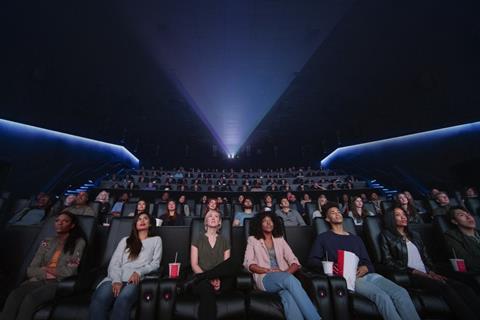The jury is out on the aesthetic qualities of high frame rates (HFR) for cinema but the technique seems an inevitable part of the future theatrical experience.

The latest attempt to break HFR into the mainstream is Gemini Man which is released on October 11. Ang Lee’s sci-fi action thriller film stars Will Smith as an elite assassin who is pursued by younger clone of himself.
It is being made in 3D at 120 frames per second with Lee convinced that HFR can create a smoother, more natural look and a more comfortable way to view 3D. At this moment the format remains exotic and is seen by many people as a distracting gimmick – if it is seen at all.
There’s good reason to suspect Gemini Man will achieve greater success than any previous high frame rate movie. While, the number of theatres equipped to playback 3D at 120fps worldwide can be counted on one hand, that’s about to change thanks to a new technology pact encompassing production through exhibition tied into the opening of Paramount’s film.
Up to 100 new projection systems capable of showcasing the film at 3D 120fps are to be installed in cinemas across mainland China, Hong Kong, Macao and Taiwan, followed by additional countries.
Dubbed the Cinity Cinema System, the Huaxia, Christie and GDC collaboration encompasses production, postproduction, distribution and projection. It includes a jointly developed projection system that will use a new model of Christie’s dual RGB laser projection configuration, combined with a new media server from GDC that can play back 120fps per eye, or 240fps.
“This is the beginning of something new in the cinema. I don’t just want to see movie images - I want to experience them. That’s a dream I’ve been pursuing since Life of Pi.” Ang Lee, director
Announced at exhibitor’s trade fair Cinemacon just before NAB, the tech alliance concerns not just projection but a film lab to help filmmakers research, test and shoot in the format. Ang Lee is among consultants to the service.
![cinemacon_show_release[1632]](https://d3dh6of9cnaq4t.cloudfront.net/Pictures/480xAny/7/7/9/7779_cinemacon_show_release1632_598118.jpg)
“At present, technical challenges along the industry chain are mostly linked to projection…with the application of HFR and other technologies as the bottleneck,” Fu Ruoqing, chairman of Huaxia Film explained. “By entering into strategic partnerships with Christie and GDC Technology, Huaxia Film will work closely with them to remove this bottleneck. By combining art with technology, we will deliver more forms of artistic presentation to the shooting and production processes to improve movie production, create a differentiated and high-end market, and keep movies alive and competitive.”
Lee, also speaking at Cinemacon, said: “This is the beginning of something new in the cinema. I don’t just want to see movie images - I want to experience them. That’s a dream I’ve been pursuing since Life of Pi.”
He urged other filmmakers to participate and help show HFR’s potential to audiences. Lee said, “It’s a different mindset and you have to create something new for it.”
- Read more: Behind the scenes: Mary Poppins Returns
The technical drawbacks to HFR are being cracked and more filmmakers including James Cameron are likely to follow Lee’s lead. Arguably what is missing is audience familiarity with what is admittedly a disconcertingly vivid experience which Gemini Man’s cinematographer Dion Beebe has told IBC365 is like looking through a window.
The film will also likely be released in a number of other versions including at the high frame rate of 60fps which thousands of projectors worldwide are capable of playing back.
PLF formats launch
A 3D 120fps theatre is just one of many technologies cinema exhibitors are investing in in order to attract punters with a superior viewing experience. Such Premium Large Format (PLF) screens typically include advanced sound systems and upgraded seating and are considered the future of cinema exhibition.
Among the latest entrants is THX, the business founded by George Lucas, which plans to unveil its THX Ultimate Cinema in the US then globally this year. THX is working with Cinionic, a cinema joint venture of Barco, CGS and ALPD. Cinionic offers a dual-Barco laser projection system that delivers 4K resolution images.

Another competitor in the premium large format (PLF) space is Dolby Laboratories, which offers its Dolby Cinema experience.
PLF screens reached a total of 3,372 worldwide in 2018 according to IHS Markit, with IMAX the market leader with a 64.8% share. Other PLF brands include CGS (mostly in China), Dolby Cinema (more than 190 screens worldwide) and Screen X.
Another new PLF system known as Sony Digital Cinema launches this year. It includes Sony’s dual 4K laser projection, HDR, Dolby Atmos sound and recliner seating. The system will cost over $1 million per screen, reports IHS Markit.
Most PLF feature high brightness laser projectors but new displays with LED or direct view technology are coming on stream. The leader is Samsung which has more than 34 installs of its DCI-compliant Onyx Cinema LED display. Sony also makes LED screens and is thought to be planning to launch a version for cinema, potentially for its own PLF.



























No comments yet